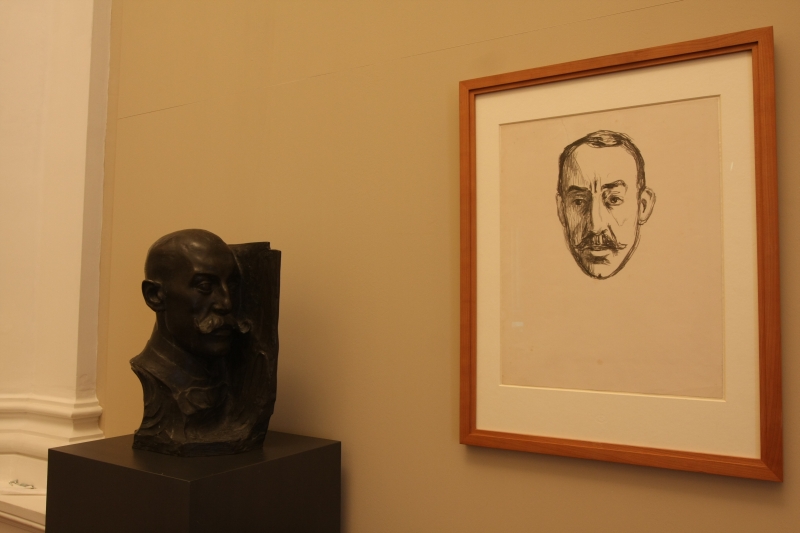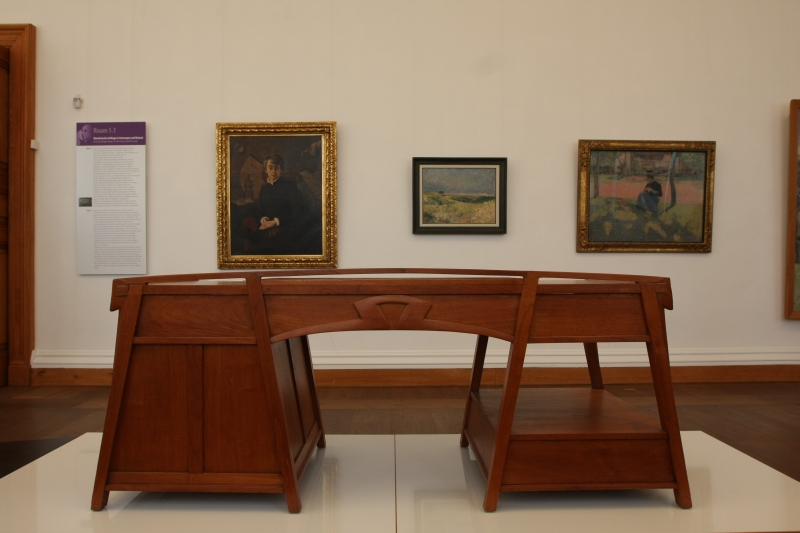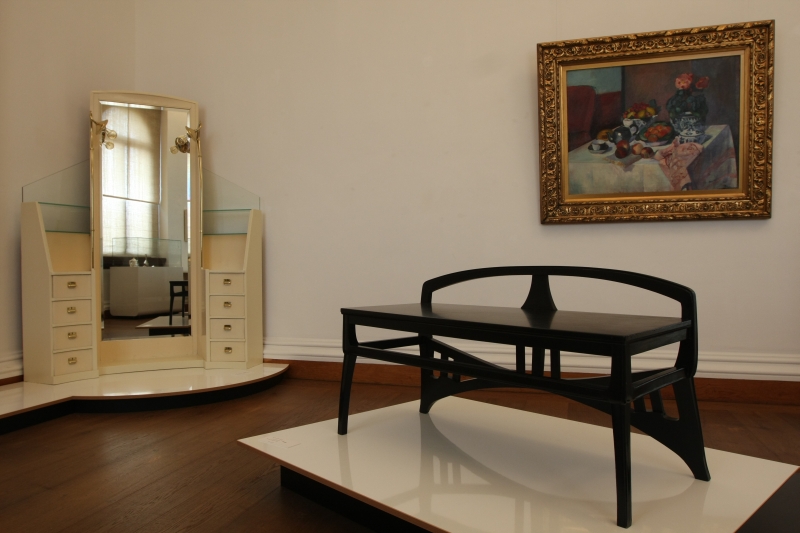Until June 23rd 2013 the Klassik Stiftung Weimar are presenting the exhibition "Henry van de Velde. Leidenschaft, Funktion und Schönheit"
Conceived to celebrate Henry van de Velde's 150th anniversary "Leidenschaft, Funktion und Schönheit" is, according to the Klassik Stiftung Weimar, the first exhibition to fully explore van de Velde's complete creativity from his earliest artistic endeavours over his applied arts and furniture design work and onto his architecture, interior design and teaching.
The legend Henry van de Velde is well known and quickly explained: He came from Belgium, was Director of the Kunstgewerbe School in Weimar, in 1915 he suggested Walter Gropius as his successor. Gropius founded Bauhaus.
That there must be a lot more to the man is clear. Just how much more is explained in the course of "Leidenschaft, Funktion und Schönheit"

The first thing to say about the exhibition is that it is extensive. Very extensive.
Presenting some 700 objects over 1400 sqm on two floors of the Neues Museum Weimar, "Leidenschaft, Funktion und Schönheit" isn't an exhibition you can rush round in your lunch break. It takes time. And deserves that time.
The exhibition opens with Henry van de Velde's artistic training in Antwerp and Brussels before moving quickly through the early years of his career and the subsequent progression away from art and towards applied arts, furniture design and architecture. The second part of the exhibition looks at, amongst other themes, his relationship with the expressionist painter Ernst Ludwig Kirchner and his time after Weimar, for all his attempts to repeat his Weimar success with the La Cambre College of Media and Design in Brussels.
Everything that you would expect to find is there; pottery, silversmithery, paintings, furniture, architecture....
And a few unexpected highlights including a model of the steamer "Prince Baudouin" for which van de Velde designed the interior, a number of early van de Velde paintings à la van Gogh and examples of the genial desks and chairs he created for Ghent University library.
The result is to provide a wide, if neccessarily shallow, overview of Henry van de Velde and his canon. Necessarily shallow as even given the space available, covering each topic in any great depth is an impossibility.
However what the organisers have achieved is highly commendable and a real joy to explore.

In the various press notes and catalogues the curators make regular reference to the exhibition setting Henry van de Velde in the context of his age through comparisons with contemporaries. If we're honest we didn't experience that. We suspect because the exhibition concept simply doesn't inspire you to explore it as such.
And therein lies, for us, the one great disappointment with the exhibition.
The layout.
To call it dull would be to do a great disservice to spending a wet Sunday alone in a remote hut without electricity, reading material or radio and confined to bed with a bad back.
We really had expected a little more imagination.
It is after all a major Henry van de Velde exhibition. In Weimar.
For all the presentation on the first floor is regrettable and while things unquestionably pick up on the ground floor: the question is if the average visitor's interest can be held that long.
The exhibits themselves are on the whole interesting, the texts informative and easy to read. And while it is helpful if you bring a little advance knowledge with you, one genuinely learns.
It would just have been nice if someone had spent a couple of minutes thinking about the context in which the objects are presented. A chair on a low-pedestal against an off-white wall is not inspiring.
And quite why the organisers felt the need to hide the Ionic pillars on the lower floor defies us. Especially as they are only half-hidden. One gets a sense of what could be. An infuriating sense. Henry van de Velde had nothing against Ionic pillars. Use them, exploit them and let the exhibition breath.
In the exhibition press release the organisers speak of how Henry van de Velde remained true to his maxim that "... the design of an object is the more accomplished, the more exactly the design correlates with its purpose"
The word "object" can be readily exchanged with "exhibition"
In his introduction to the accompanying programme, exhibition curator Thomas Föhl defines the first aim of the exhibition as providing visitors with an "... interesting experience that is as sensory as it is enthralling"
And while the exhibition is without question interesting. No one can call it enthralling. Far less sensory.
And so, and to paraphrase Henry van de Velde, having partially missed its purpose, Leidenschaft, Funktion und Schönheit isn't as accomplished as it could, or indeed should, be.
Sadly.

Although Henry van de Velde wasn't single-handedly responsible for laying the golden path to European modernism, he did play one of the more important roles and has more than earned his place in history and the respect of future generations.
The joy of "Henry van de Velde. Leidenschaft, Funktion und Schönheit" is that it doesn't really touch directly upon that aspect. Henry van de Velde's contribution to the development of Modernism is visible, but doesn't dominate. Rather the exhibition moves alongside those developments that created the van de Velde legend to present a portrait of an artist, designer and architect in the context of his creativity rather than his influence.
As such it offers a fleeting insight into a creative talent for whom the term Gesamtkunstwerk can be applied to the man as much as to his approach to his work.
Consequently, and despite the shortcomings in the presentation, is to be recommended.
"Henry van de Velde. Leidenschaft, Funktion und Schönheit" can be viewed until June 23rd 2013 at the Neues Museum, Weimarplatz 5, 99423 Weimar.
Full details can be found at: www.klassik-stiftung.de
In addition, from March 29th until 12th May the Bauhaus University Weimar is presenting an exhibition of all Henry van de Velde's buildings. Organised and curated by the architecture students "Der Architekt Henry van de Velde" employs 3D computer models to recreate the exteriors and interiors of van de Velde's canon.
Full details, and the free exhibition App, can be found at www.uni-weimar.de/projekte/vandevelde/ausstellung/